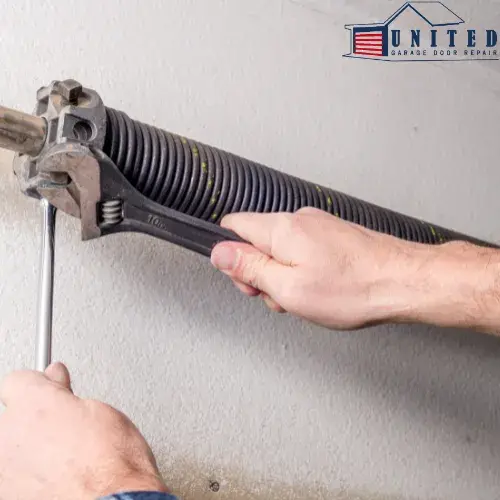However, factors like climate, maintenance, and the weight of your garage door can impact how long your springs last. If you live in an area with extreme weather, the springs may wear out faster due to added stress.
Understanding these timelines helps you plan for a garage door springs replacement before they fail completely. Regularly inspecting your springs for wear and ensuring proper lubrication can also extend their lifespan, keeping your garage door running smoothly for years.
Common Signs It’s Time for a Garage Door Springs Replacement
Knowing when to replace your garage door springs can save you from unexpected breakdowns. One of the most common signs is a garage door that feels unusually heavy or won’t stay in place when lifted manually. This happens when the springs lose their tension.
Another red flag is strange noises—if you hear loud creaking, snapping, or grinding sounds, your springs are likely worn out. Visible wear, such as gaps in torsion springs or stretched-out extension springs, also indicates it’s time for a replacement.
Finally, if your garage door operates unevenly or fails to open altogether, it’s a clear signal that your springs may be broken. Addressing these issues promptly ensures safety and prevents further damage to your garage door system. Don’t wait for a complete failure—timely replacement keeps your door functional and reliable.
Maximizing the Life of Your Garage Door Springs: Maintenance Tips and Best Practices
Proper care can significantly extend the life of your garage door springs, saving you time and money. Start with regular inspections—look for signs of wear, rust, or gaps in the springs. If you notice anything unusual, address it immediately.
Lubrication is key to reducing friction and stress on the springs. Use a high-quality garage door lubricant every 3–4 months to keep them running smoothly. Also, check the door’s balance by disconnecting the opener and lifting the door manually—it should stay in place if the springs are in good shape.
Avoid overloading your garage door. Adding unnecessary weight, like insulation or heavy decor, puts extra strain on the springs. Finally, consider upgrading to high-cycle springs if your household uses the garage door frequently. These tips help you get the most out of your springs and delay the need for a replacement.
Read More:
Enhanced Safety: How Garage Door Springs Replacement Protects Your Family

